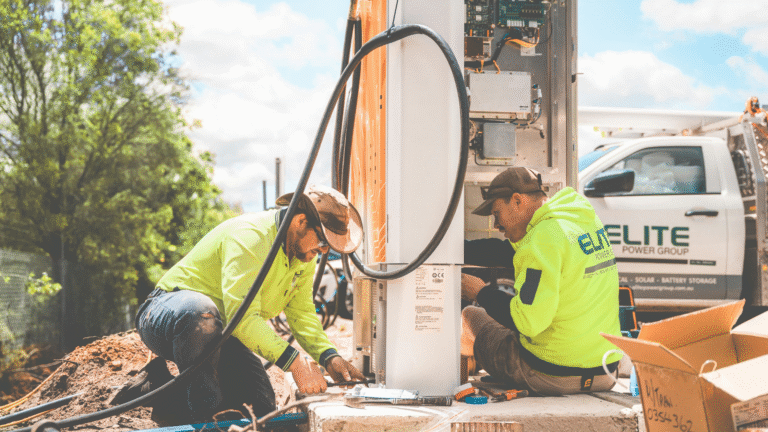Every time the petrol pump climbs a few cents, Australian drivers reassess the economics of motoring. Rising fuel prices are not just a short-term sting — they change behaviour, influence vehicle choice and accelerate longer-term moves to electric vehicles (EVs). This article explains the mechanics of that shift, what it means for urban drivers, regional users and fleets, and practical next steps for anyone thinking of making the switch.
Table of Contents
- Why fuel price spikes change consumer behaviour
- The direct economics: cost per kilometre and running savings
- Psychological and behavioural drivers — beyond money
- How fleets and businesses respond to fuel volatility
- Practical steps for drivers considering the switch now
- FAQs
1. Why fuel price spikes change consumer behaviour
Sharp or sustained rises in petrol and diesel cause immediate re-evaluation. For many households, transport is a clear monthly line item; when that line rises visibly, choices that once felt marginal — commuting mode, vehicle replacement timing, or taking the bus — suddenly look worthwhile. EVs benefit from this rethink because electricity costs tend to be more stable and predictable than liquid fuels, and because switching to an EV is a recognisable, near-term action drivers can take.
2. The direct economics: cost per kilometre and running savings
EVs typically offer lower energy costs per kilometre than petrol cars — the charger at home is often cheaper than the bowser even when accounting for off-peak tariffs. While rising electricity costs can erode some of that advantage, the variability and frequency of fuel-price spikes usually keep petrol cars more expensive to run over time. Those savings compound for high-mileage drivers and fleets, where daily kilometres multiply the pump-cost pain.
3. Psychological and behavioural drivers — beyond money
The move to EVs is also driven by perception. When fuel prices spike:
- Buyers accelerate purchase timelines for new cars.
- Lease decisions favour fuel-cost certainty.
- People reevaluate perceived hassles with EVs (range anxiety, charging) and often find they’re smaller than expected in day-to-day use.
Social proof matters too: as more neighbours and colleagues adopt EVs to escape fuel volatility, the psychological barrier to change drops.
4. How fleets and businesses respond to fuel volatility
Fleets react fast because fuel is a large line item. When diesel or petrol becomes less predictable:
- Fleet managers accelerate electrification pilots for high-mileage roles.
- Employers prioritise depot charging and energy-management investments.
- Budgeting shifts from volatile fuel procurement to planned electricity tariffs or bundled energy contracts.
These fleet moves improve charging infrastructure for everyone and increase used-EV availability as fleets rotate vehicles.
5. Practical steps for drivers considering the switch now
- Calculate your current monthly fuel spend and compare it to likely electricity cost for an EV (include home charging and occasional public DC).
- Consider a short test period: rent or lease an EV for a month to experience daily running costs and convenience.
- For high-mileage drivers, prioritise EVs with good rapid-charging acceptance; for city drivers, a modest-range EV plus a home wallbox is usually enough.
- Factor in incentives, stamp-duty savings, and total-cost-of-ownership rather than headline price alone.
Start with real numbers for your specific commute and lifestyle — that clarity makes the decision easier.
FAQs
Q: Will electricity become as volatile as fuel?
A: Electricity markets are different; while spot events happen, households with off-peak plans, solar or smart charging have tools to reduce exposure. Overall, electricity tends to be less prone to the frequent price shocks seen in fuel markets.
Q: Do EVs still save money if fuel prices fall?
A: In many cases yes — EVs have lower maintenance and energy-per-kilometre benefits that persist even if fuel softens briefly.
Q: How quickly can someone recoup the EV premium because of fuel savings?
A: It depends on mileage and charging habits. High-mileage drivers and fleets see faster payback; low-mileage city drivers also save but over a longer timeframe.
Conclusion
Rising fuel prices are a strong accelerant for EV adoption: they sharpen the economic case, change buying psychology, and push fleets to electrify sooner. If the pump is hurting your household budget, model your real driving patterns, try an EV short-term and consider a home-charging plan — those steps usually reveal the concrete savings and convenience that make the switch worthwhile.
Meta description: Rising petrol prices are pushing Australians to consider EVs. Learn how fuel spikes change buying behaviour, fleet decisions and practical next steps to switch.
